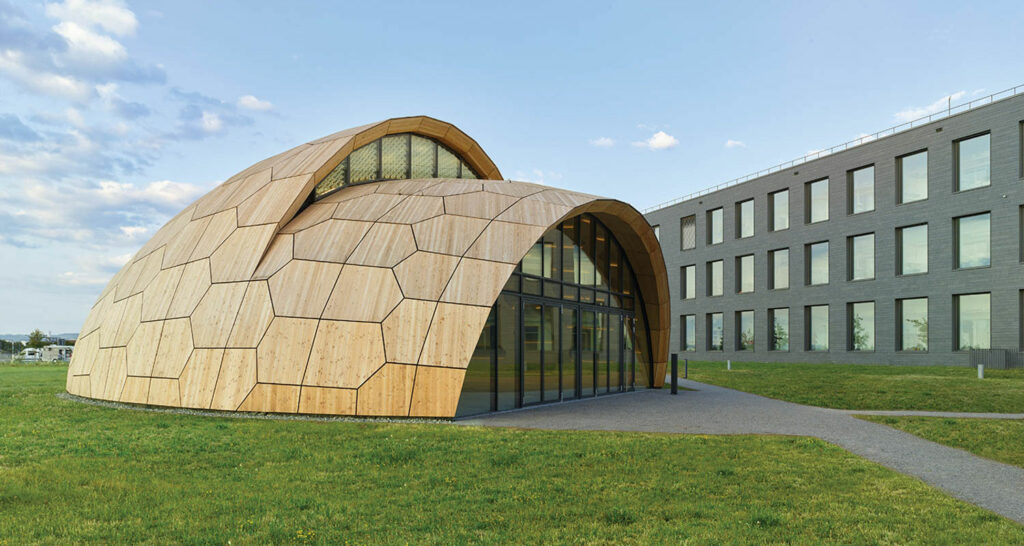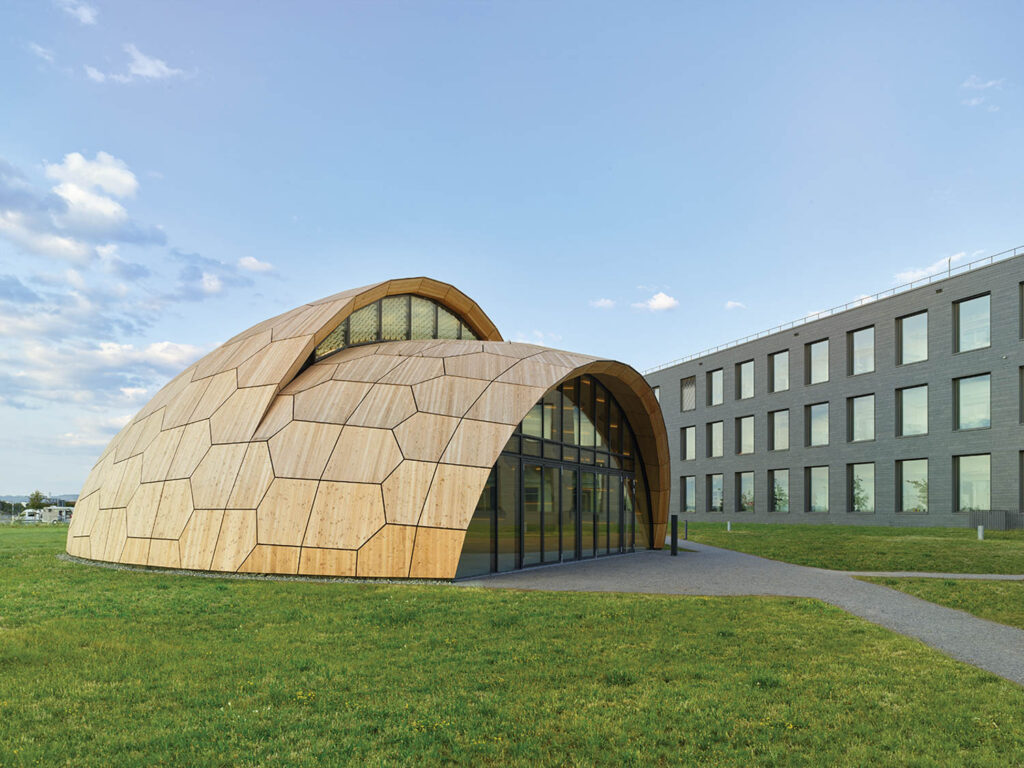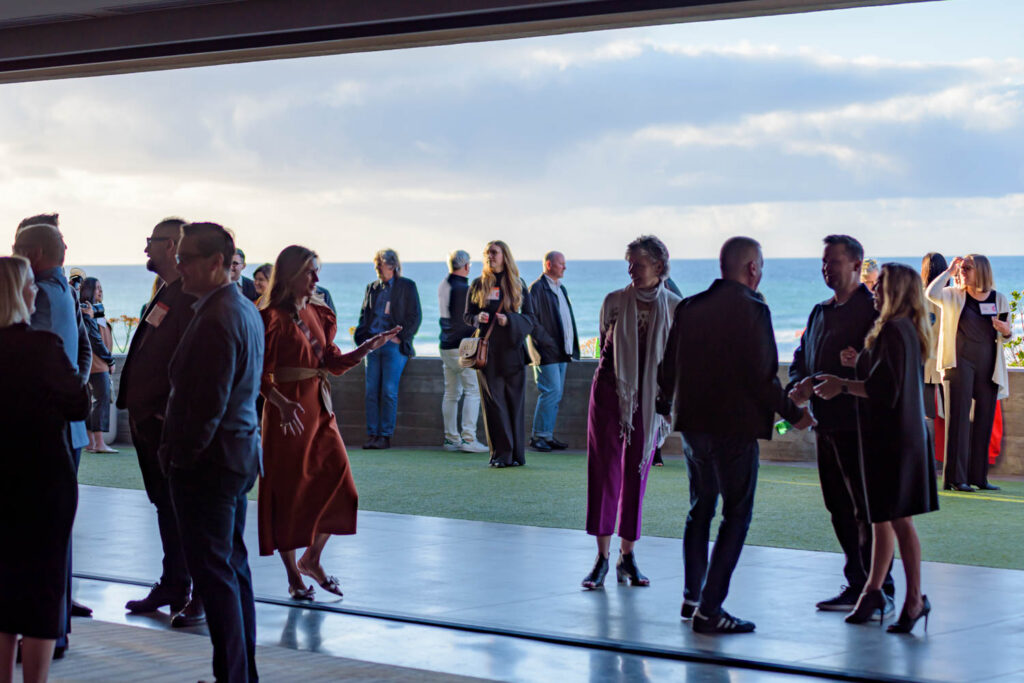
A Sea Creature Informs the Design of This Biomimetic Pavilion
An urchin inspired a resource-efficient biomimetic pavilion in Freiburg, a joint effort between two German universities using new forms of human-machine interaction.

Made with Rhinoceros, Grasshopper, and Sofistik software, an early diagram shows the sea urchin–inspired livMatS Biomimetic Shell, a pavilion at Germany’s FIT Freiburg Center for Interactive Materials and Bioinspired Technologies, a collaboration between the University of Freiburg’s Cluster of Excellence Living, Adaptive, and Energy-Autonomous Materials Systems and the University of Stuttgart’s Cluster of Excellence Integrative Computational Design and Construction of Architecture, two research groups co-investigating construction techniques that reduce environmental impact.

The hollow modules forming the structure were prefabricated in a Blaustein factory using new forms of robotic manufacturing that are more efficient than conventional wood construction.

To form the modules, workers used AR headsets and a seven-axis robot that sandwiched together milled spruce panels, insulation boards, waterproofing membranes, lighting and acoustic elements, and larch cover plates.

On-site, a robotic spider crane with a vacuum gripper lifted the modules, which measure 52 by 54 feet, while a second screwed them in place.


Biobased hygroscopic materials are incorporated into the pavilion’s glass clerestory, a weather-responsive shade system that was modeled on the moisture-controlled opening and closing of pine cones.
The Stats Behind the Making of the livMatS Biomimetic Shell
- Dozens of students, researchers, and engineers led by professors Jan Knippers and Achim Menges
- 2,152 square feet of floor
- 127 prefabricated wood modules
- 10+ years of sea-urchin research

The curved geometries of the prefabricated modules are inspired by the plate skeleton of the sea urchin and integrate LEDs.

The interior of livMatS Biomimetic Shell, which is 33 feet high and being used as a space for free thinking, has a thermally activated floor slab of recycled concrete, making it comfortable year-round without additional heating or cooling.

Compared to a typical timber building, the pavilion’s material consumption was reduced by more than half.
read more
DesignWire
View a Towering Installation in Spain Made of Silk
Years of research into the structural potential of standard textiles transformed silk into a towering installation in Spain by Paloma Cañizares Office.
DesignWire
10 Questions With… Kostas Lambridis
The work of Greek artist Kostas Lambridis considers the nuances of the current age, including the impact of rapid technologies and environmental crisis.
DesignWire
Yves Béhar: 2022 Interior Design Hall of Fame Inductee
Industrial designer Yves Béhar, founder and CEO of Fuseproject, is inducted into the Interior Design Hall of Fame.
recent stories
DesignWire
Top Product Picks from the 2024 Kitchen & Bath Industry Show
Check out the sizzling, must-see products that have graced the show floor of NKBA’s KBIS 2024, from Barbie pink faucets to sleek gas cooktop ranges.
DesignWire
10 Questions With… Architect and Designer, Victoria Yakusha
Ukrainian architect, designer and artist Victoria Yakusha sheds light on her overall practice and the ongoing challenge of the war in Ukraine.
DesignWire
Giants and Rising Talent Attendees Explore How Science Shapes Design
What type of environment optimizes cognitive function? A neuroscientist explores this question and more during Interior Design’s Giants and Rising Talent event.





